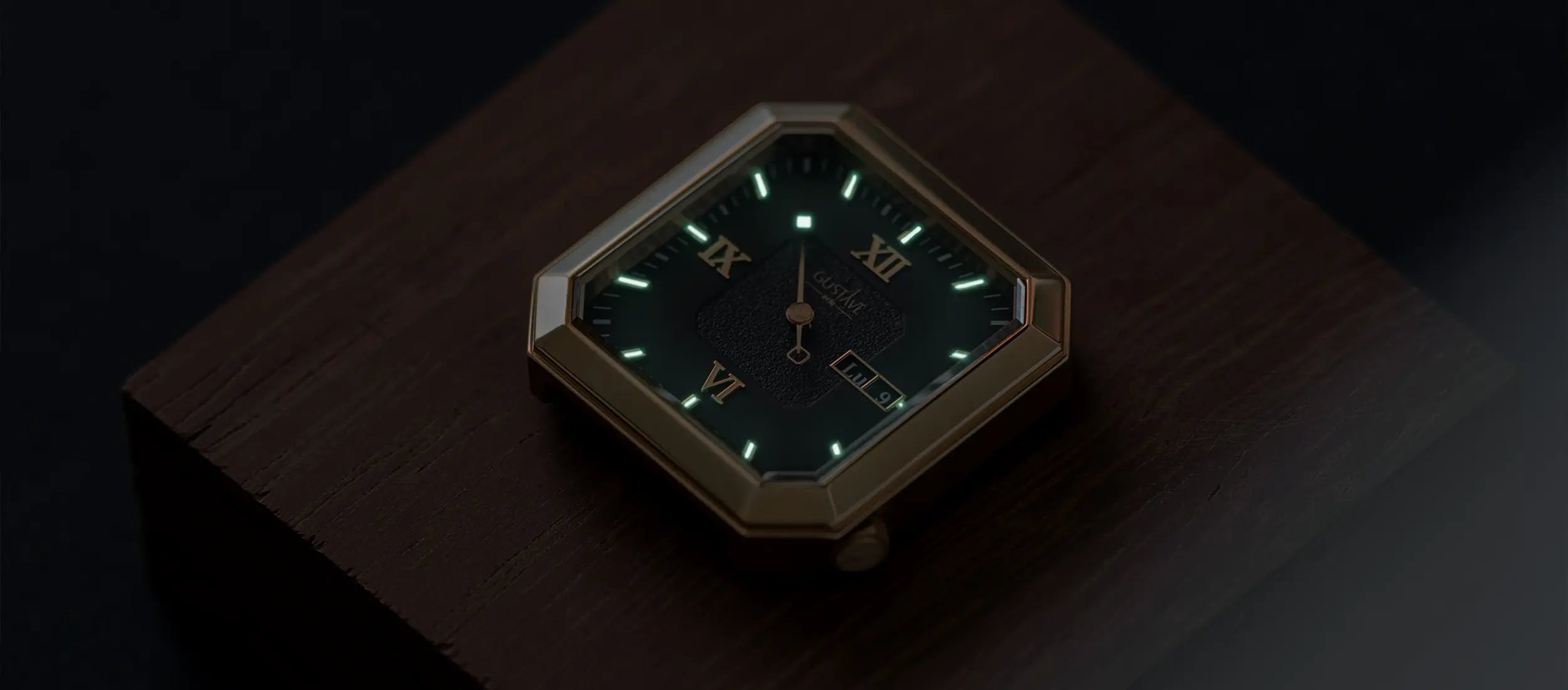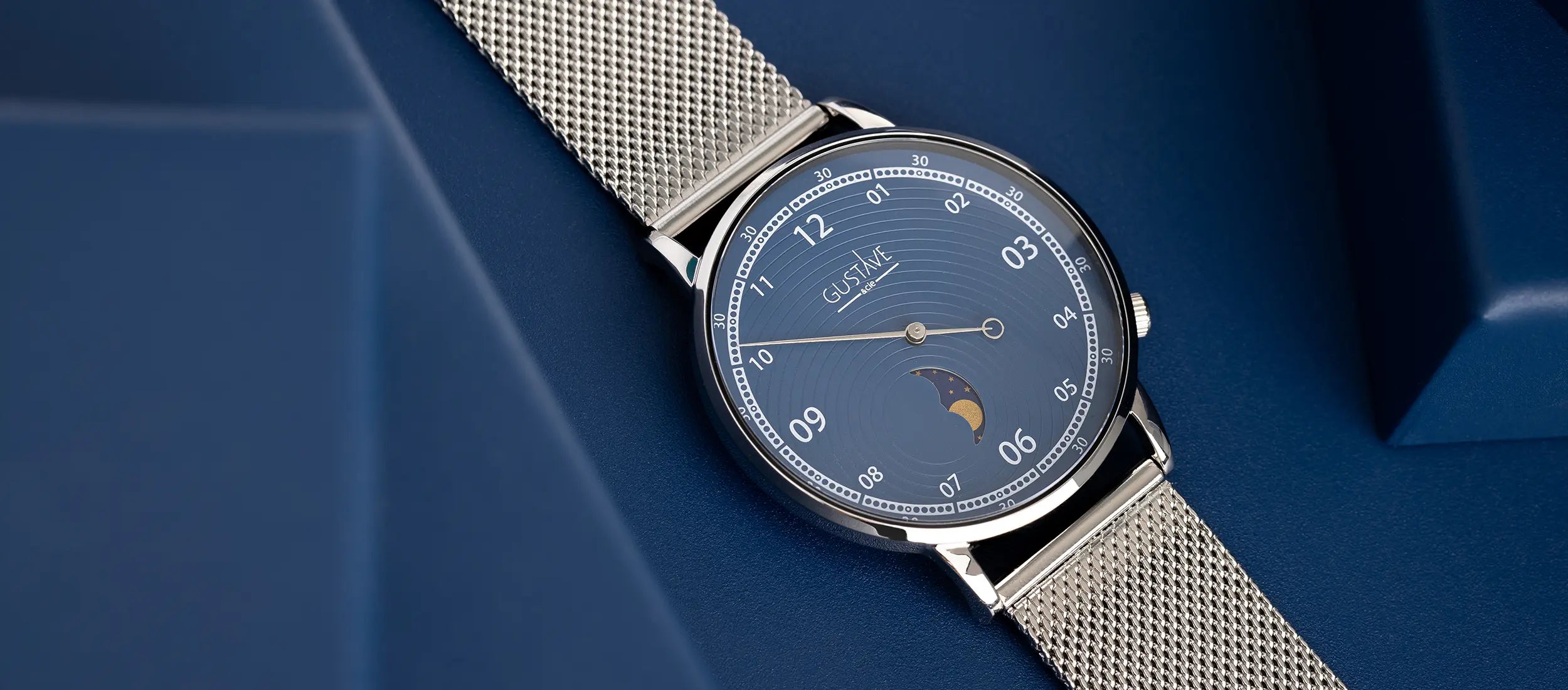Radium, Tritium and Super-LumiNova: History and Use
When you're interested in the world of watchmaking, you often hear the term "Super-LumiNova" and more rarely the words "Radium" or "Tritium". These rather technical terms ultimately refer to the luminescent material used on the dial of your watch. Each of these materials has its advantages, disadvantages and more or less undesirable effects.
History and technical advances
Today, at night, we are surrounded by light and can produce it instantly with our mobile phone. The dark night has therefore become an outdated expression. At the time, however, the night was really dark and it became complicated to read the time on your watch. It is to meet this need that Radium was used in watches for its luminescent capabilities.
Discovered by Marie Curie in 1898, it didn't take long for an innovative watchmaker to use its properties. The indexes and hands of watches, once covered with this material, shine constantly thanks to the radioactivity emitted. Exploited for decades, it was in 1963 that the use of Radium was stopped, deemed too dangerous for health. The employees responsible for depositing the Radium on the hands were mostly women. Called "radium girls", they were victims of the adverse effects of radioactivity and many died from it.
It was following the ban on the use of Radium that Tritium appeared in the world of watchmaking. Indeed, it was considered less radioactive and therefore less dangerous. However, after several years of use, it was quickly banned in turn, considered potentially dangerous.
Later, in the 1990s, LumiNova appeared. Invented by the Japanese company Nemoto, this phosphorescent pigment has the enormous advantage of not emitting radioactivity. LumiNova is still used in some watches but the most widely used phosphorescent material today is Super-LumiNova or SLN.
Super LumiNova was invented in 2007 and is now found in most quartz and mechanical watches.

Technical properties
Each luminescent component has advantages and disadvantages, and even undesirable effects. Better understanding their functioning and characteristics is important for any amateur but also for a first purchase, in order to know what to expect.
Radium
The advantage of radium is its ability to produce constant light radiation with high intensity. Its disadvantage or at least its undesirable effects is the constant radioactivity it emits.
In order to easily recognize Radium, you can finally take out your old Geiger counter to measure its radioactivity (I'm kidding). On this kind of dial, you will distinguish Radium by its brown color but also by its constant luminescence. In addition, if your watch was produced before 1963, There is a chance that it has Radium indexes and hands.

Tritium
Also a radioactive component, but to a lesser extent, Tritium shines constantly for about ten years. The disadvantage is its fairly limited lifespan, and of course its slightly radioactive side.
To recognize Tritium, you can check its radiation, it should be quite low but constant without needing to be charged. To make it simpler, you will also find the inscription “T” on the bottom of the dial, generally after the place of manufacture. Here we can read “T Swiss Made T” at 6 p.m. which means that the material used is indeed Tritium.

Luminova & Super-LumiNova
Finally, let's talk a little about the latest, the new luminescent components that are LumiNova and Super-LumiNova (SLN). The first advantage is that this time, they do not represent any danger to health. Another definite advantage is also the lifespan of this material. Indeed, the lifespan of SLN is “unlimited” but the intensity decreases after about ten years all the same.
The disadvantage is directly related to its advantage: its luminescence. Unlike its ancestors, it is non-radioactive and therefore cannot afford to shine constantly. It is now necessary to “charge” this material with UV so that it releases the accumulated energy. The greater the charge, the longer the luminescence period will be.
The LumiNova's lighting time is approximately 5 hours compared to 15 hours for the Super-LumiNova.
Recognizing Super-LumiNova is easy, you just have to leave your watch in the dark, if it no longer glows after a few days, it is SLN! In addition, if your watch is relatively recent then it probably has Super-LumiNova indexes and hands.

Special features and colours of Super-LumiNova
There are different “grades” of Super-LumiNova for different uses and prices:
-
Standard
-
Grade A
-
Grade X1
Grade X1 is twice as effective as standard Super-LumiNova.
Super-LumiNova, like the classic LumiNova, is available in different colours, both raw and illuminated. The raw colour may differ from the illuminated colour. The darker the natural colour, the less it will illuminate.
For example, a black index will illuminate less than a red one, a red one will illuminate less than a light blue one, etc. *see graph*

Nowadays, if you buy a new watch, you will most certainly have Super LumiNova on the dial and hands. This material is completely safe and will accompany you throughout the entire life of the watch. Extremely reliable and customizable, it offers a wide variety of colors: enough to delight manufacturers.
For the second-hand market, be careful and aware of the risks of Tritium and Radium, use our article to recognize them!
SOURCES:
-
Lip Illustration: Musee-Lip
-
Radium Dials: Ebay: DoughBoyWatches
-
Omega Dial: Chrono-Shop
-
Illustration LumiNova: The Naked Watchmaker





Leave a comment
This site is protected by hCaptcha and the hCaptcha Privacy Policy and Terms of Service apply.